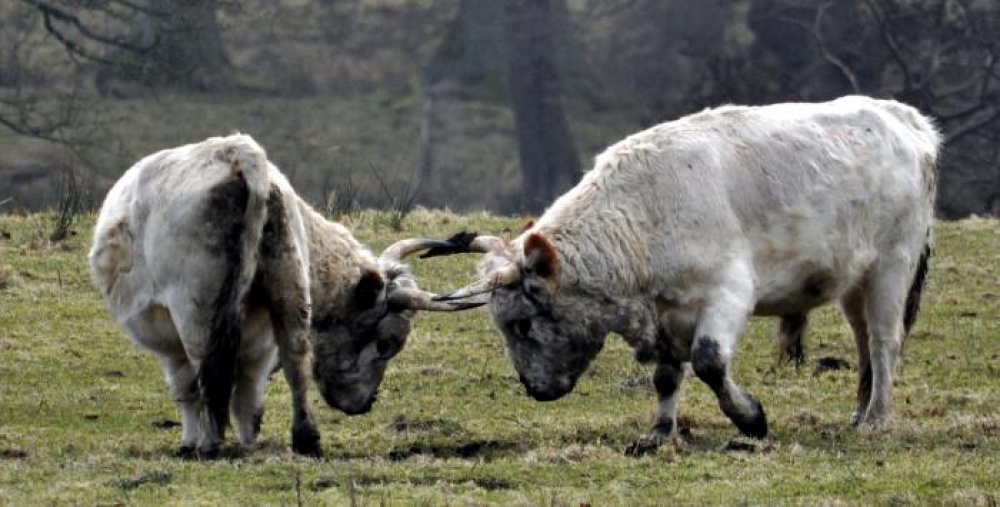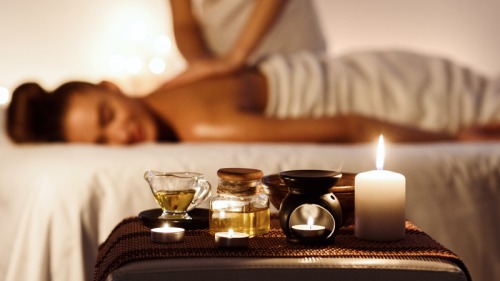Marvels Of The Chillingham Wild Cattle

The legendary Chillingham wild cattle are one of the rarest animals on the planet
It’s pitch black in the forest park by Chillingham Castle and a low undulating bellow ripples outside Ellie Crossley’s cottage in the middle of the night. Suddenly, the thundering sound changes to a high-pitched cry. This is the call of the Chillingham wild cattle, the red-eared horned white beasts which have roamed the grounds by the castle for 700 years, untouched by humans. Ellie is their keeper – the first ever female warden.
They must be special beasts. Ellie relocated all the way from Dorset, where she grew up, for this ‘once in a lifetime opportunity’ to take the job.
‘I’m used to countryside noises, but the bellows that they make at night sound very spooky! The noises carry all the way to my cottage at the bottom of the hill. Luckily, I live with Rick my other half, who is a groundsman at the castle,’ says the 25-year-old, who has a Diploma in Countryside Management. Five months into the job, and it’s clear Ellie has built a rapport with these cattle. As well monitoring the herd, Ellie leads tours for curious visitors who want to see the 120-strong herd in the wooded pastures. Before doing those tours though, Ellie has to assess the cattle’s mood, which will dictate how close she’ll allow visitors to get to them.
‘Some days when they are really relaxed – lying around and grazing – I’m happy to take people close to them because I know there won’t be much danger. We’ll keep about 50 yards from them, but it’s close enough to see them. But there are days when the bulls are fighting and very anxious so on those occasions, I don’t take people any closer than 100 yards.
‘I think the appeal of the cattle lies in the fact that they are completely untouched by humans so there has been no selective breeding and only the strongest traits get passed down to the next generation as they breed among themselves for survival. This makes them so different for the domestic cattle that you see out in the field. That big udder we’ve bred into dairy cattle, or the big steak back-ends of beef cattle, is so unnatural.’
If she’s out in her all-terrain vehicle, Ellie can get quite close to them. ‘It’s amazing to see cattle as nature intended, their hierarchies and their relationships, because no one else in the world keeps 50 bulls with cows together, all of different ages. You have to see them up close to appreciate how magnificent they are.’
She’s a one-woman agricultural machine with the park as her office. When she’s not giving tours, Ellie’s out in the park checking the boundaries, fixing fences and gate posts, and felling trees. Throughout the winter months, it’s down to Ellie to provide the cattle with hay, which they have always been given during the coldest season. She can also be found hunting for new calves. The Chillingham cattle give birth in the woods where they leave their calf alone, but protected in the long grass, while they go and feed. It’s during these times that Ellie has to find the calves, make a note of the sex and check they’re healthy so they can go on record as the calves aren’t tagged.
If the calf is not healthy, Ellie says, the herd will either actively kill it or they will reject it and it’ll starve to death – as shocking as this sounds, it’s how the herd have grown stronger. ‘I think the cattle are awe-inspiring. As warden, I say I look after the herd, but they look after themselves mainly. I’ve heard that they date back to Julius Caesar’s time, as there are records that tell of sacrificing white cattle with red ears because they were considered to be pure,’ reveals Ellie. ‘If this doesn’t refer to them, it’s highly coincidental.’
It’s said that Chillingham Castle is the most haunted house in the world and the cattle have played a part. ‘There are stories of people in crusades having visions of the wild cattle,’ says the 78-year-old owner of the castle Sir Humphry. ‘Friends of the castle who were wondering how to get there on a dark misty night, recounted being led through the park by a friendly hand. They didn’t know the cattle but they survived. Other stories tell of enemy troops attacking the castle being faced with a wall of cattle, when the cattle weren’t in that part of the land at the time. On seeing this wall of cattle, the enemy decided to shoot off and the castle was saved.’
Sir Humphry and Ellie are the only two who are brave enough to get close to the cattle and he frequently goes riding through them on his chesnut horse. Previously, they were used to his black and white horse, so when Sir Humphry dared to venture out on a new horse, he had first-hand experience of their aggressive nature. It took a couple of months for the bulls to cease their habitual defence circle formation but they eventually got used to it. Only the naive would underestimate them, then.
‘The cattle and castle have been interwound,’ says Sir Humphry. ‘They protected us and we protected them for many years and we’re now all interlinked in a world of tourism. But the cows are clever and they have their ancient wisdom. I believe this wisdom will see them through to happy times for another couple of thousand years after we’ve gone.’
Chillingham Wild Cattle Association
Chillingham, Alnwick, Northumberland
www.chillinghamwildcattle.com







